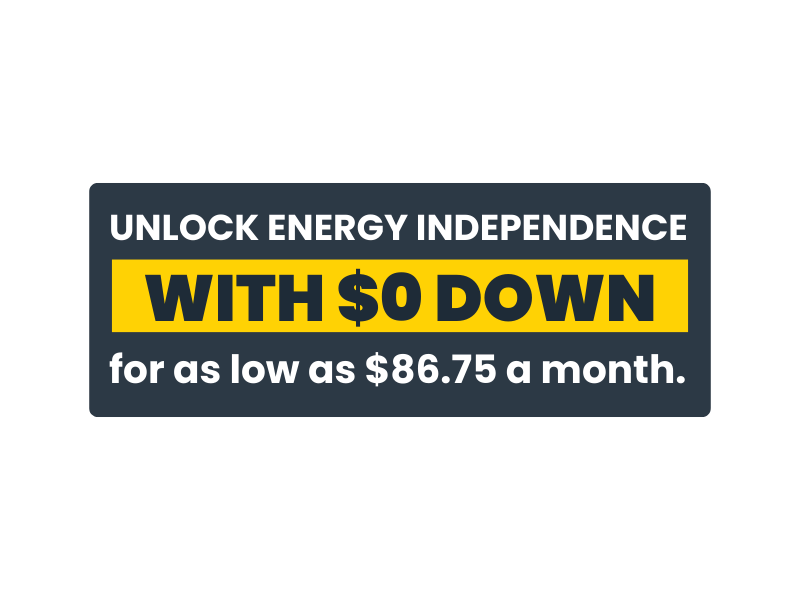In today’s world, the dream of energy independence is more achievable than ever before. For homeowners in Ohio and the Midwest, solar panels offer a powerful solution to the rising utility costs that have become a significant concern. By harnessing the sun’s energy, you can gain greater control over your energy expenses, achieve long-term savings, and contribute to a sustainable future. Here’s how solar panels can help you achieve energy independence and protect your finances from the volatility of the energy market.
Understanding Energy Independence
Energy independence means generating your own electricity, reducing or even eliminating your reliance on the traditional power grid. For homeowners, this is primarily achieved through the installation of solar panels, which convert sunlight into electricity. By producing your own power, you shield yourself from fluctuating utility rates and gain predictability in your energy expenses.
The Rising Cost of Utility Bills
Utility costs have been steadily increasing due to various factors such as aging infrastructure, increased demand, and regulatory changes. In Ohio and the Midwest, homeowners have seen their energy bills rise year after year, straining household budgets. The average American household spends about $1,500 annually on electricity, and this figure is expected to continue climbing. Investing in solar panels offers a way to counter these rising costs by producing your own energy and reducing your reliance on the grid.
Financial Benefits of Solar Panels
- Immediate Savings: From the moment your solar panel system is activated, you start saving money. By generating your own electricity, you purchase less from your utility company, resulting in lower monthly bills.
- Fixed Energy Costs: Solar panels allow you to lock in your energy costs for the lifespan of the system, which typically ranges from 25 to 30 years. This means you can avoid the unpredictability of rising utility rates and budget your energy expenses more effectively.
- Incentives and Rebates: Both federal and state governments offer various incentives to encourage the adoption of solar energy. The Federal Solar Investment Tax Credit (ITC) allows you to deduct a significant portion of your solar installation costs from your taxes. Additionally, Ohio and other Midwestern states offer rebates and incentives to further reduce the upfront cost of going solar.
- Increase in Home Value: Solar panels can significantly boost your home’s value. Studies have shown that homes with solar energy systems sell for more than those without. Prospective buyers are attracted to the idea of lower energy bills and energy independence, making your property more appealing.
Achieving Energy Independence with Solar Panels
- Assess Your Energy Needs: The first step towards energy independence is understanding your current energy consumption. By analyzing your utility bills and assessing your energy usage, you can determine the size of the solar panel system you need to meet your energy demands.
- Choose the Right Solar Panel System: Various solar panel options are available, each with different efficiencies and costs. Working with a reputable solar installer like YellowLite ensures you receive expert advice on the best system for your home and budget.
- Optimize Your Energy Usage: To maximize the benefits of your solar panel system, consider incorporating energy-efficient appliances and smart home technology. These tools help you monitor and manage your energy consumption, ensuring you make the most of the electricity generated by your solar panels.
- Consider Energy Storage Solutions: Pairing your solar panel system with energy storage solutions like the Tesla Powerwall allows you to store excess energy generated during the day for use at night or during power outages. This further enhances your energy independence by ensuring a steady supply of electricity regardless of grid conditions.
Environmental Benefits
In addition to the financial advantages, achieving energy independence with solar panels has significant environmental benefits. By generating your own clean energy, you reduce your carbon footprint and contribute to a healthier planet. Traditional energy sources like coal and natural gas release harmful pollutants and greenhouse gasses into the atmosphere, exacerbating climate change. Solar energy, on the other hand, is renewable and produces no emissions, making it a sustainable choice for the future.
Overcoming Common Myths
Myth #1: Solar Panels Are Too Expensive: While the initial cost of solar panel installation can be high, the long-term savings and available incentives often offset these costs. Financing options and solar leases make it more affordable for homeowners to invest in solar energy.
Myth #2 : Solar Panels Don’t Work in Cloudy Weather: Solar panels can generate electricity even on cloudy days. While their efficiency may be reduced, they still produce a significant amount of energy. Ohio and the Midwest receive ample sunlight throughout the year to make solar panels a viable option.
Myth #3: Solar Panels Require Too Much Maintenance: Solar panels are designed to be low maintenance. Regular cleaning and periodic inspections are typically all that’s needed to keep them functioning efficiently.
Conclusion
Energy independence through solar panels is an achievable goal that offers numerous benefits for homeowners across the US including Ohio and the Midwest. By investing in solar energy, you can protect yourself from rising utility costs, gain control over your energy expenses, and contribute to a more sustainable future. With financial incentives, increasing home value, and environmental advantages, there has never been a better time to consider solar panels for your home. Take the first step towards energy independence with YellowLite, contact us to get a quote.



